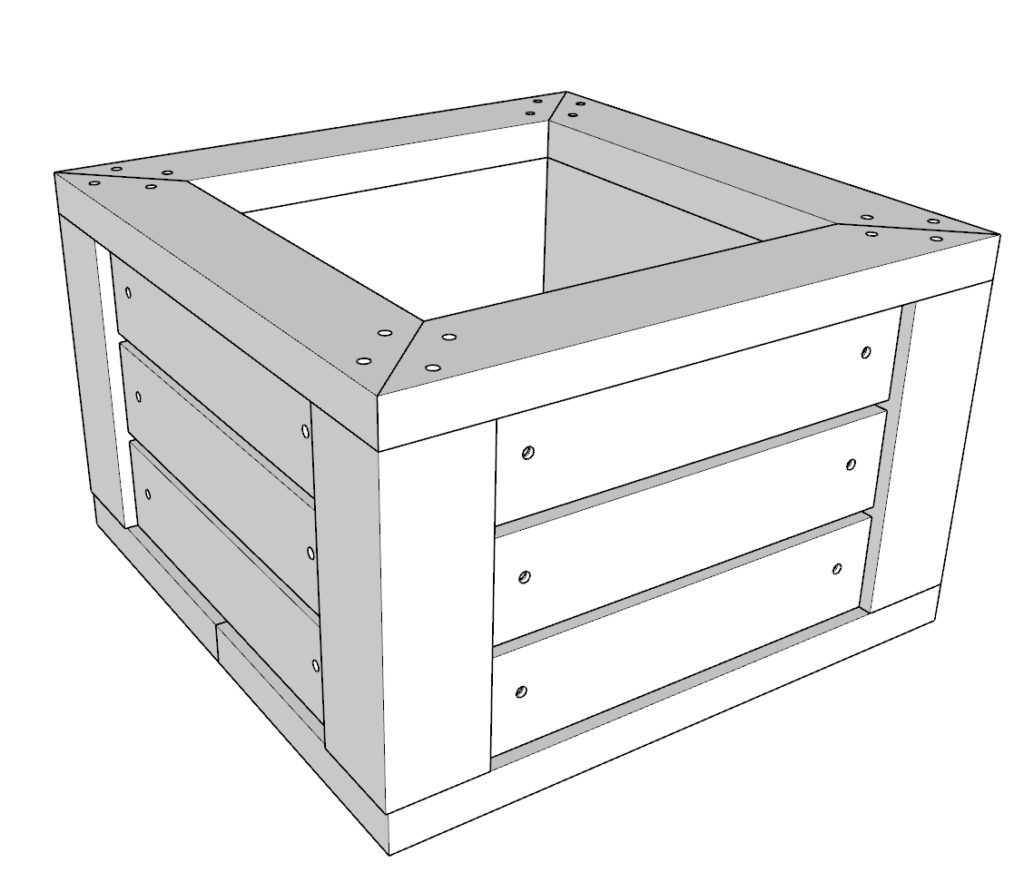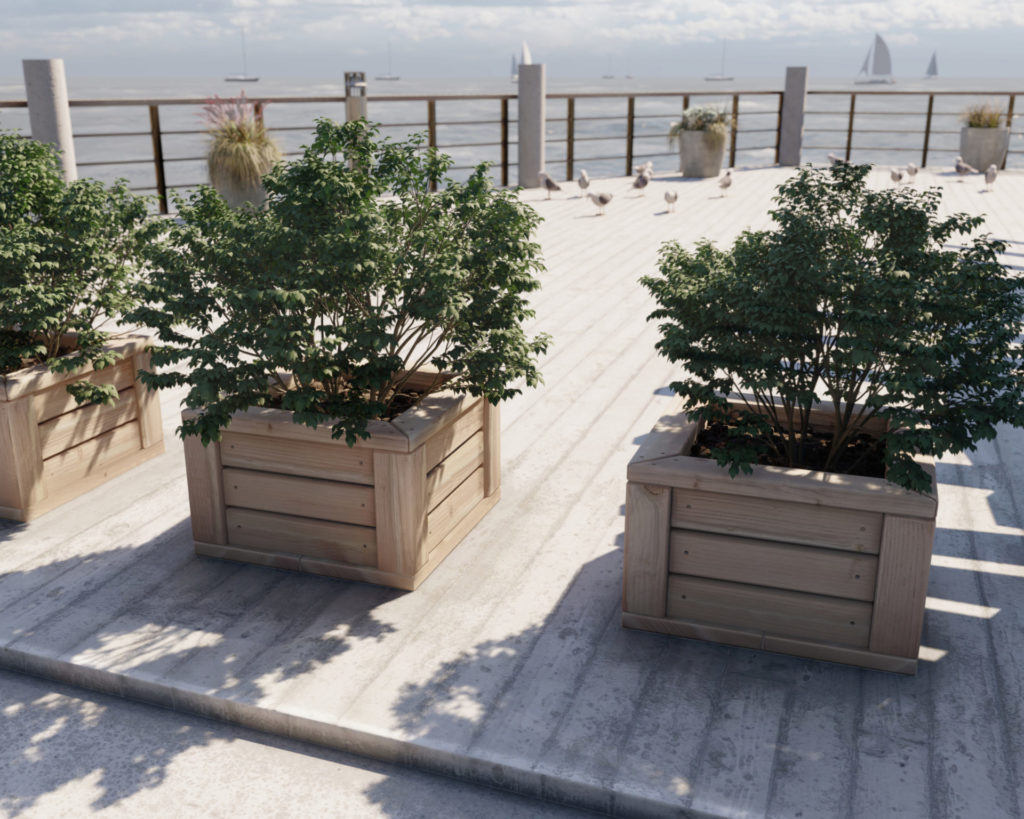Why build a DIY planter box?
There are many good reasons to build a DIY planter box. With a planter box you get all the benefits of a traditional garden with some amazing additional perks. You can control your soil better and move it around. With more control over the soil, you are also able to space out your plants better and not have parts of a garden go to waste. The planter box walls can serve as a barrier to keep out slugs, snails, and other pests. The Soil will not be errored in rainy conditions and is also not susceptible to chemical leaks as it is sealed off. Also a raised garden allows you to spend less time pulling weeds bent over.
Planter boxes are also a great way to showcase your hard work. You can have your flowers, herbs, plant, and vegetables on display, raised off the ground. Planter boxes can ensure that you prized garden does not get lost among other plants.
Furthermore, adding a planter box to your backyard, porch, and yard is a great way to add curb appeal. Add several in a pattern and you have a outdoor home improvement makeover that’s on a whole new level. This is a relatively inexpensive way to beautify your space and to show case your little garden.
Use planter boxes for landscape architecture by positioned them in a way to subdividing large backyard spaces into more dedicated and functional areas. Examples include areas for medication, play, outdoor fireplaces, outdoor dining, and pool areas. These boxes can be filled with beautiful plants to support the theme of the landscape it frames.
Wooden planter boxes are also great because they can be stained to fit the style of any backyard or space. You are not limited to using lumber from a hardware store. It is entirely possible to build planter boxes using recycled reclaimed wood. This can give the planter boxes a beautiful rustic and farmhouse look.
What are the specs of this DIY planter box design?
Beginners to woodworking are able to build these boxes by following the easy step by step instructions provided. These planter boxes can be built in under a day with basic woodshop skills.
The height of the garden boxes are at about 14.25 inches. You will not have to struggle to bend down all the way to the ground to work on your plants. This is an ergonomic option for gardening.
The design includes a double wall. The walls are made from 2x4s on the outside, 2x12s on the inside, with 4×4 posts on the outside corners to frame the whole structure. These lumber sizes are easy and cheap to find in most hardware stores.
These raised planter boxes can be places on a deck, porch, patio, or cement slab.
Since you are working with wood it would be easy to add a sub-irrigation self-watering system so that the garden can be less time consuming to take care of and more hands off for those who prefer that.
Working with wood also allows you to easily add lattices and other support structures for vining plants and vegetables that need support to grow. Cucumbers, gourds, melons are all great examples.
The boxes can last a long time if you lined the inside with landscaping fabric. This will prevent the wood from rotting and decomposing quickly. Using pressure treated wood may cause chemicals to diffuse into the soil.
What are the dimensions of the planter box?
These boxes are 14.25 inches tall, 22.5 inches wide, and 22.5 inches long.


Time to build
1 hour per planter box
Total cost of build
$45
Skill level required
Beginner
Download the PDF plans
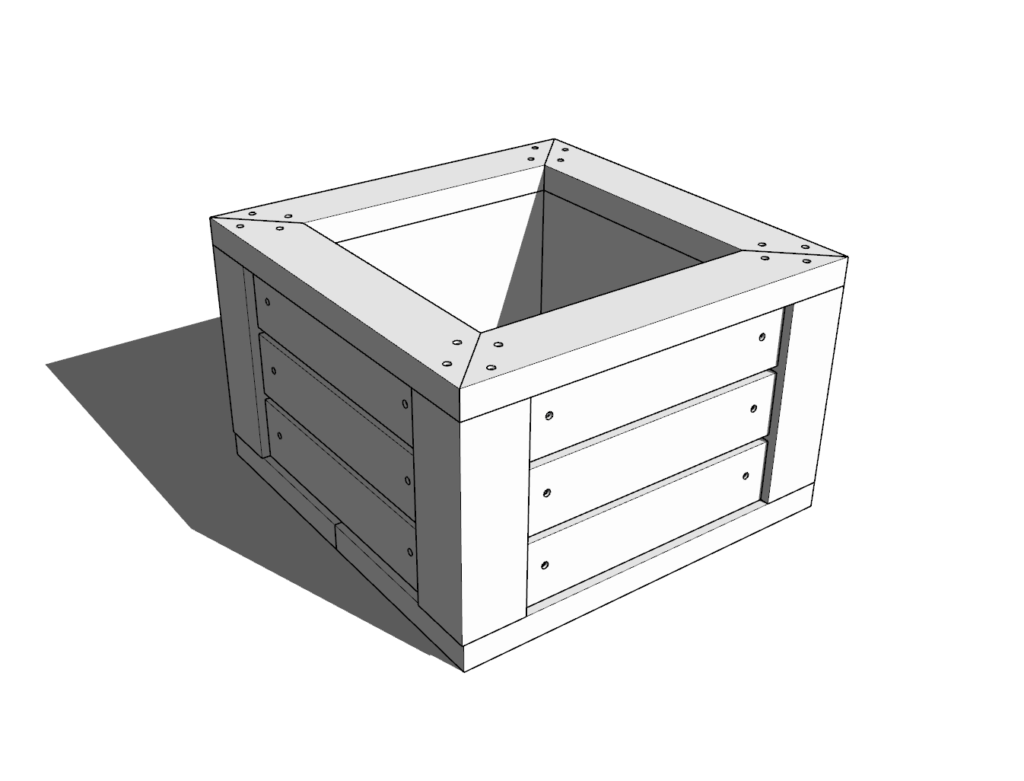
Plans for how to build the 1.5 ft x 2 ft x 2 ft planter box
What is included in the PDF download?
- Easy to read step by step instructions
- Material list
- Cut list
- Tools needed
- 3D illustrations
- Helpful links to tools and materials needed for the project
Recommend tools for this project
- Saw (miter saw recommended for precision cuts)
- Drill
- Ratchet Strap
- Impact driver with bit for screws
- Sander
- wood countersink drill bit
Cut list and material list
Available with purchase of PDF plans.
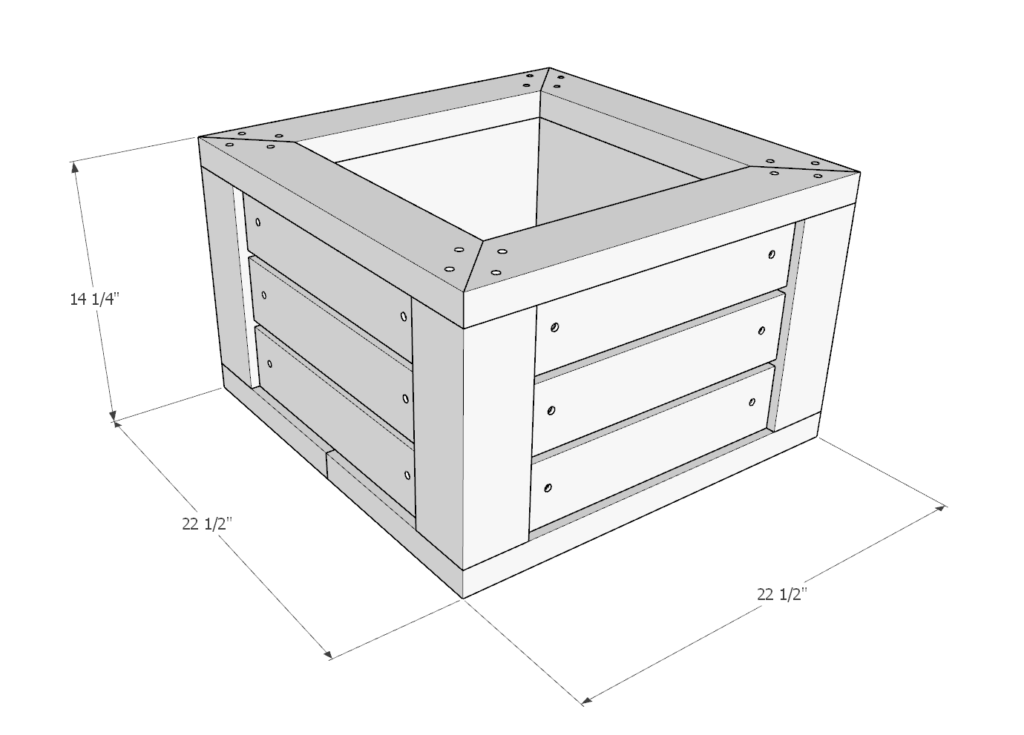
Step 1 (DIY planter box)
Precut all your wood pieces into the following dimensions:
(2) 2-in x 12-in x 22.5 inches
(4) 2-in x 12-in x 15.5 inches
(12) 2-in x 4-in x 15.5 inches
(4) 2-in x 4-in x 22.5 inches cut at 45 degrees on both ends (see diagram in plans)
(4) 4-in x 4-in x 11.25 inches
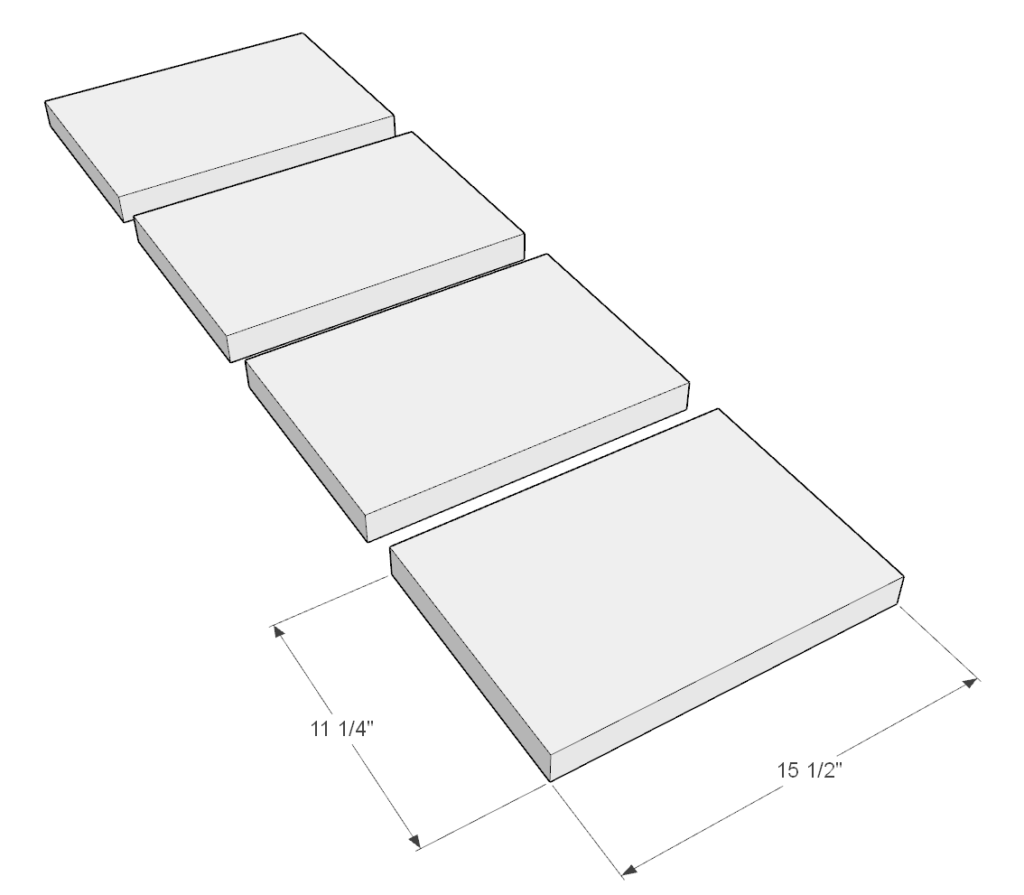

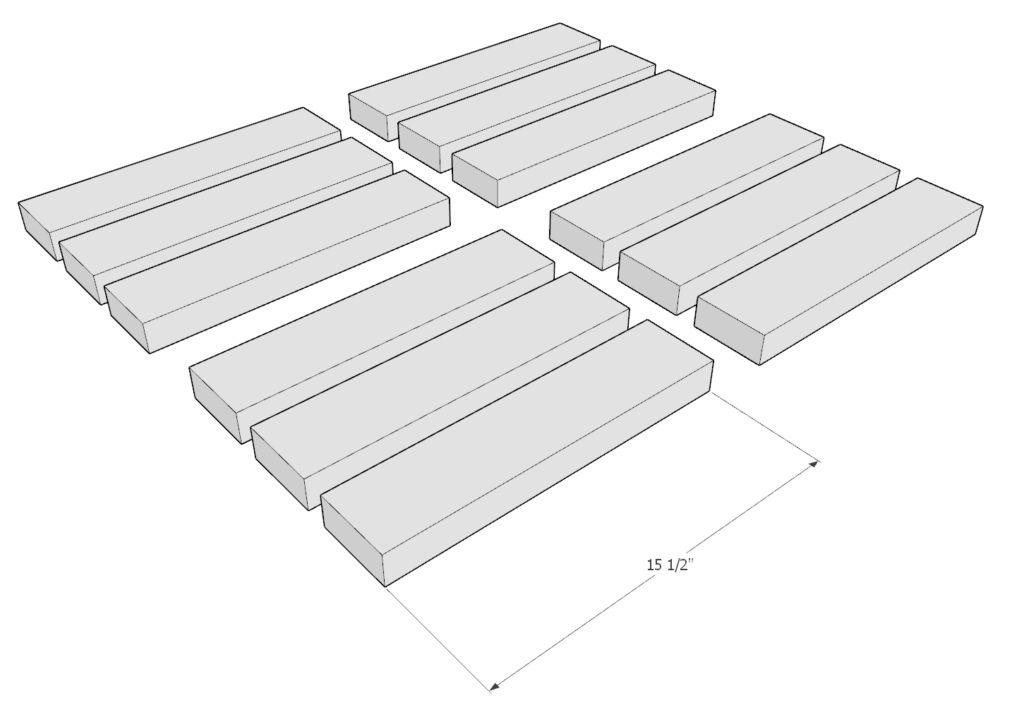
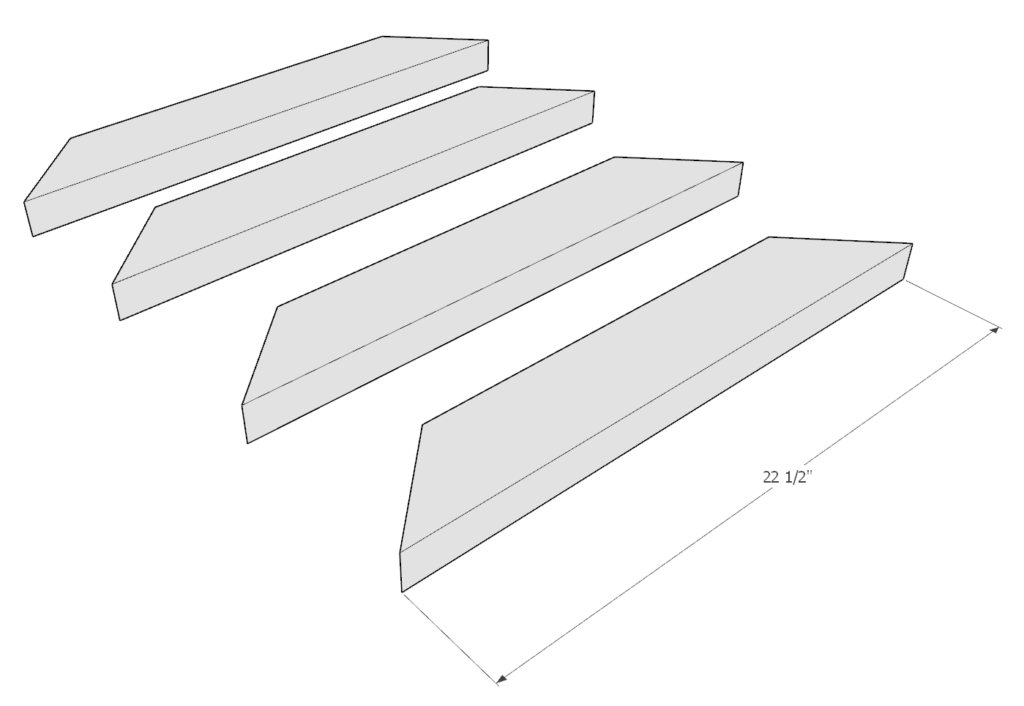

Step 2 (DIY planter box)
Start by attaching the 15.5 inch 2×4 pieces to the 15.5 inch 2×12 pieces.
Arrange the lumber pieces as shown in the diagram.
predrilling holes to prevent wood from splitting. Add glue to the entire side of the 2×4 that will be making contact with the 2×12 piece and add 2.5 inch screws. Avoid using the longer screws so they don’t tick out into the planter box.
Space out the 2×4 pieces 3/8 inch apart. I use a spacer that I cut from scrap wood to 3/8 inch to help me space out the 2x4s evenly.
Repeat this step for all 4 walls of the planter box.
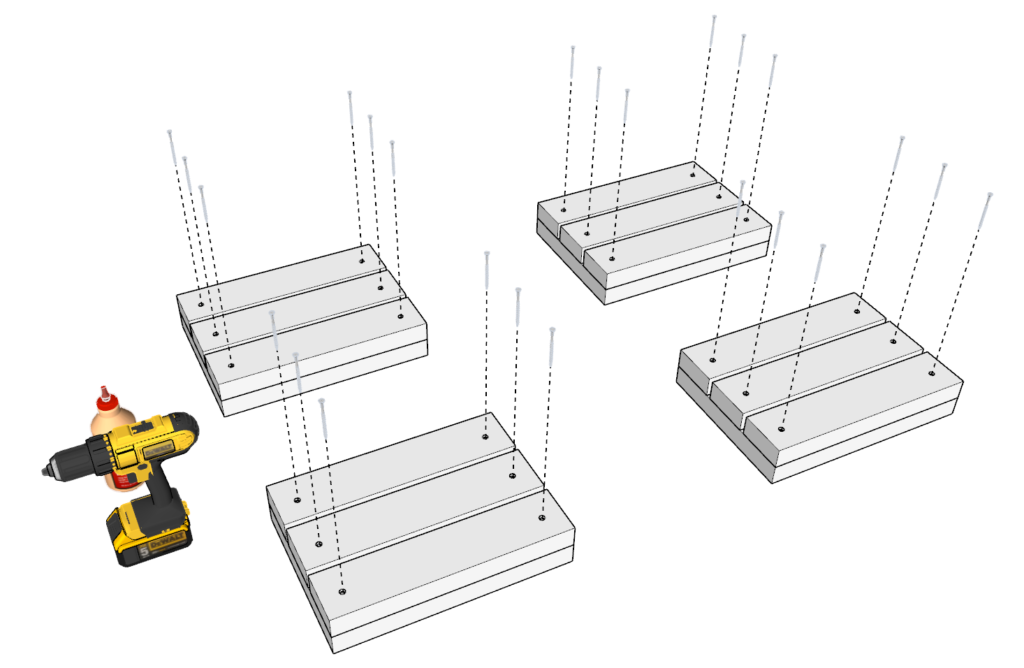
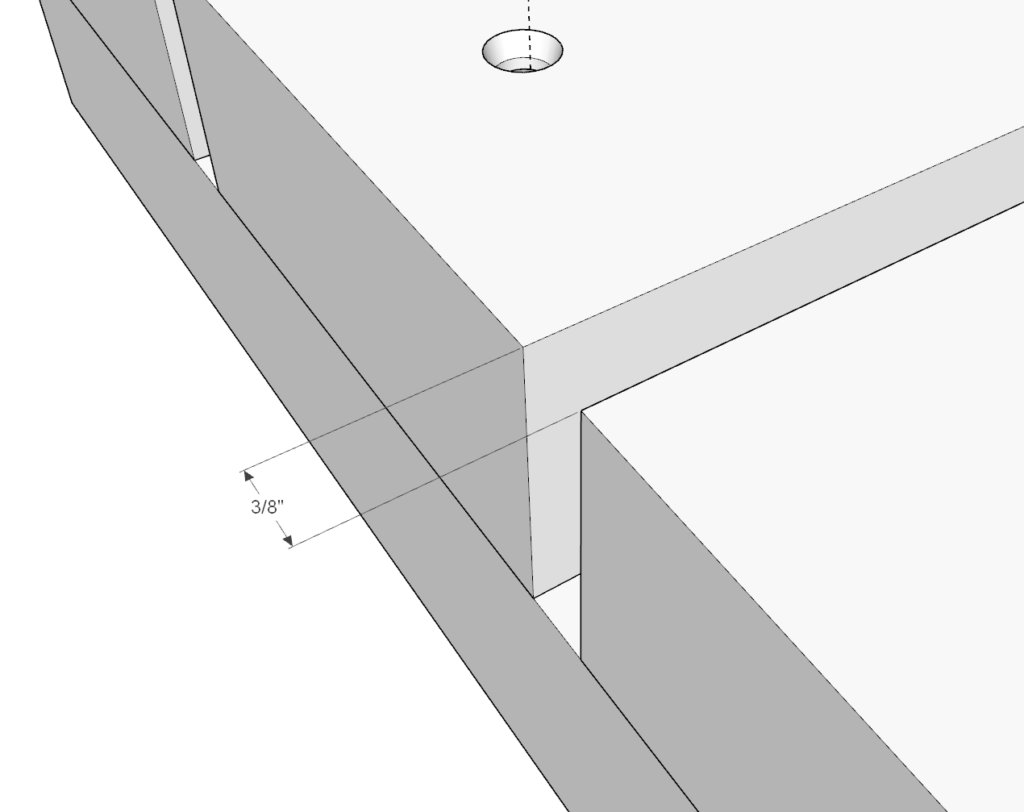
Step 3 (DIY planter box)
Next, take the 15.5 inch wall pieces built in the previous step and arrange them together with the 4×4 lumber pieces as shown in the diagram.
Add glue to all the areas that will be joined.
Use a ratchet strap to bundle the structure together. Before you tighten it hard, use a hammer or something blunt to “hammer” the pieces into the correct spot.
Once all the pieces are in the correct spot, tighten the ratchet straps. Predrill holes for the diagonal screws. Add screws.
Turn the structure over and add screws to the bottom as well. Don’t forget to predrill.

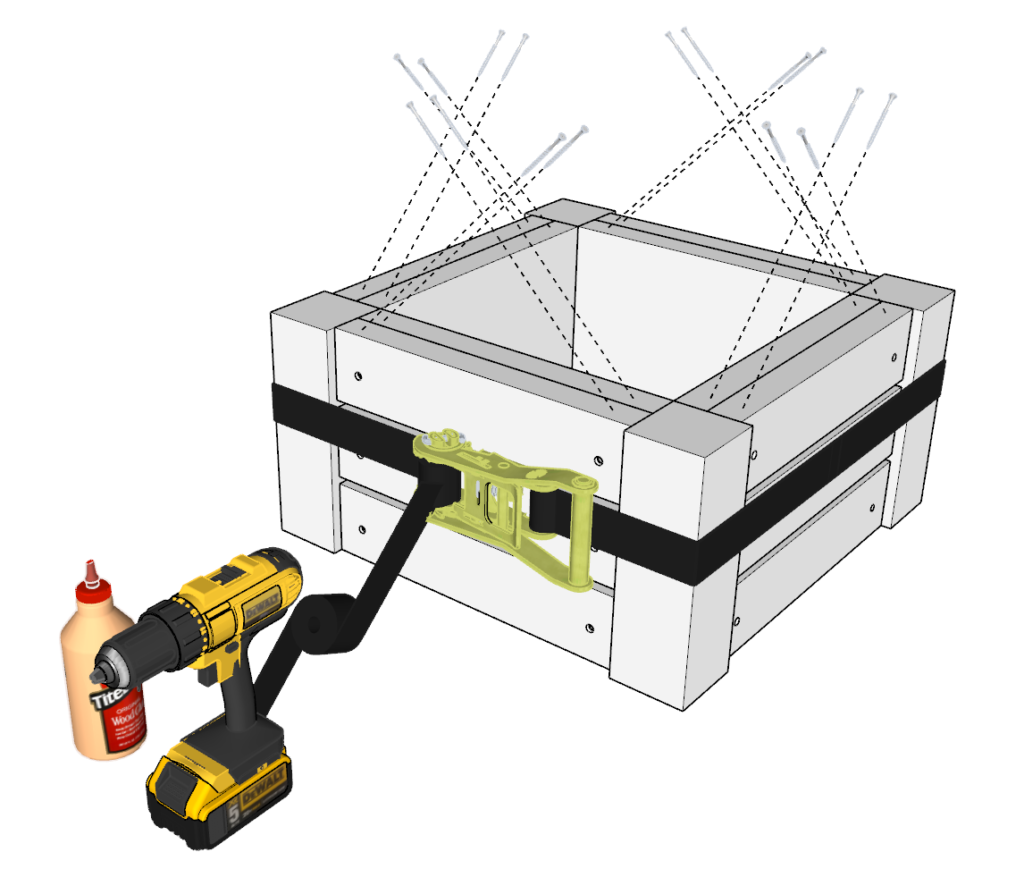

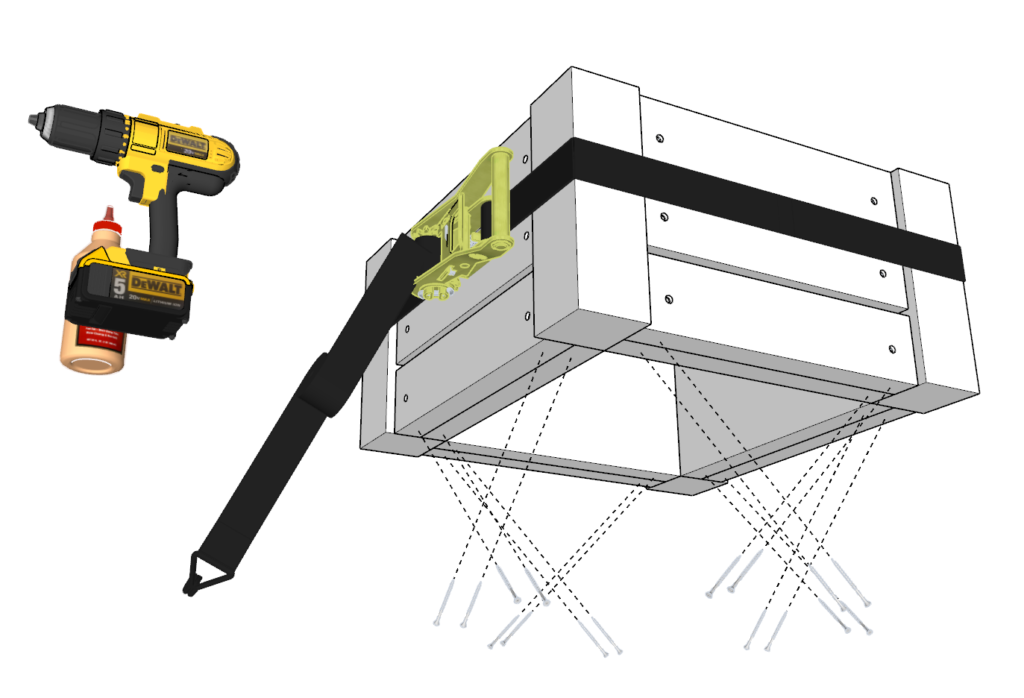
Step 4 (DIY planter box)
Next, take the remaining 2×12 lumber pieces and place them as the bottom boards for the planter box.
Apply glue to all areas that will be making contact, predrill, and add screws. You can use either 2.5 inch or 3.5 inch screw here.
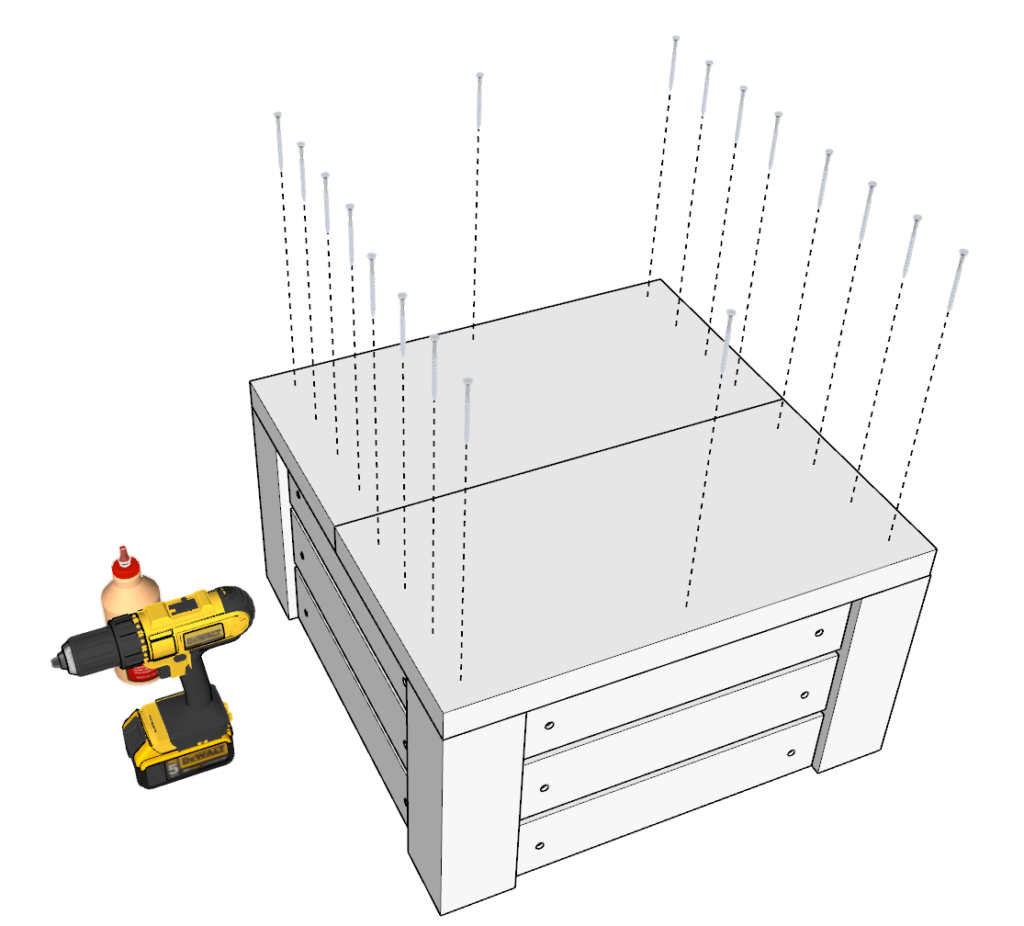
Step 5 (DIY planter box)
Next, add the trim pieces to the DIY planter box using the remaining 2×4 pieces that were cut at a 45 degree angle.
Don’t forget to be generous with glue, predrill, and add screws. Use 2.5 or 3.5 inch screws.

Step 6 (DIY planter box)
The final step is to sand down the planter box. This is optional but does make the box have a cleaner and nicer look.
I start sanding with a rough grit sandpaper. Usually about 80-grit. Then, for the final touch I use a fine grit. Usually, a 220-grit.
The planter box is now ready to be stained or painted.
Lastly, add the gardening lining and add dirt. Your ready to garden!
